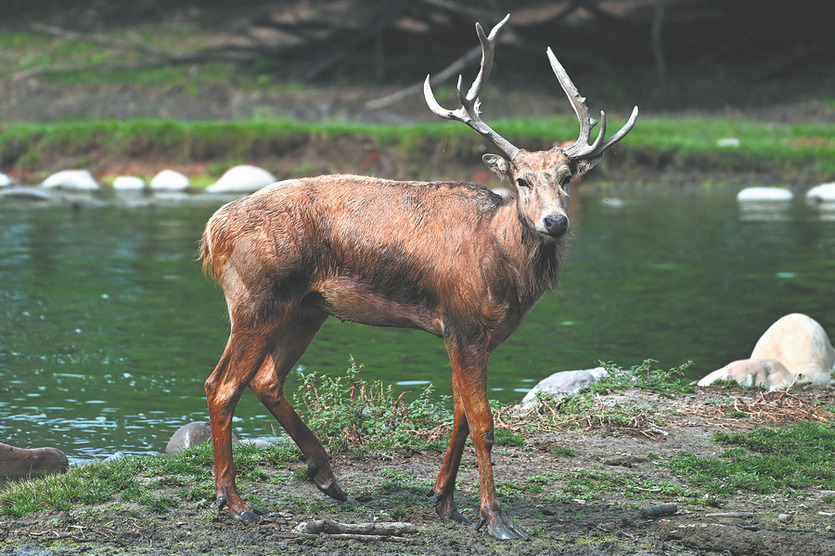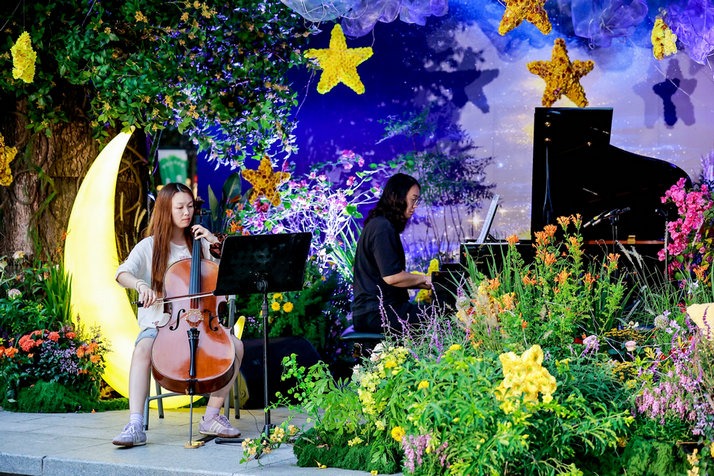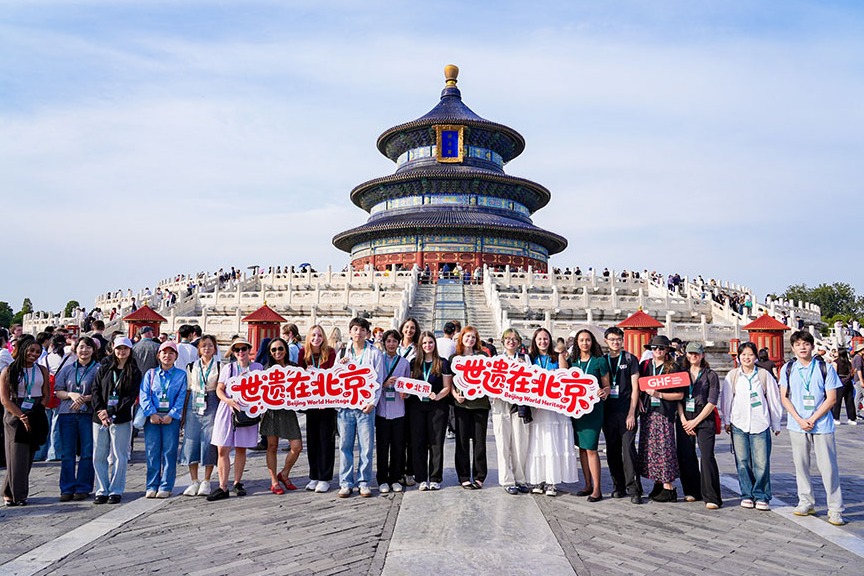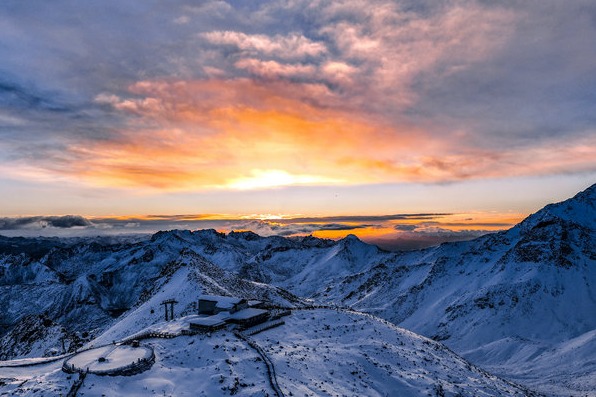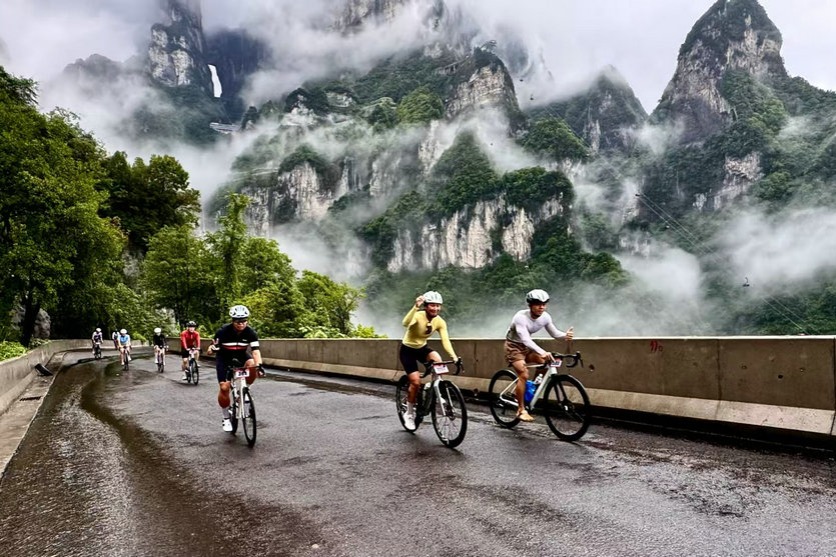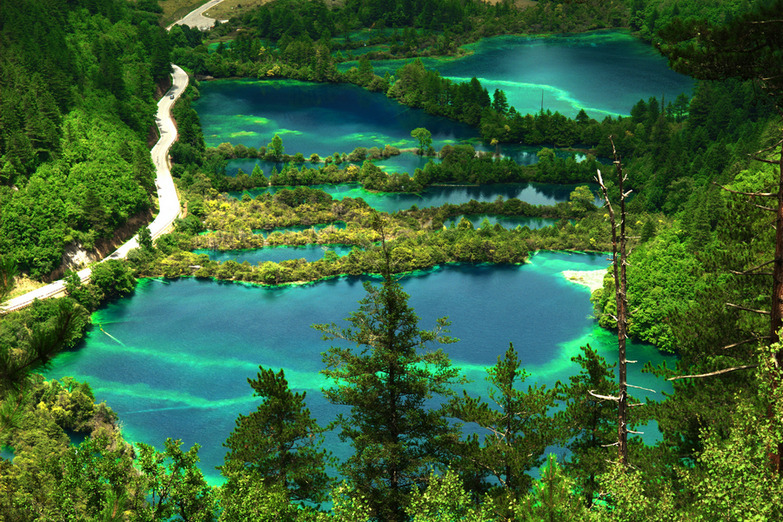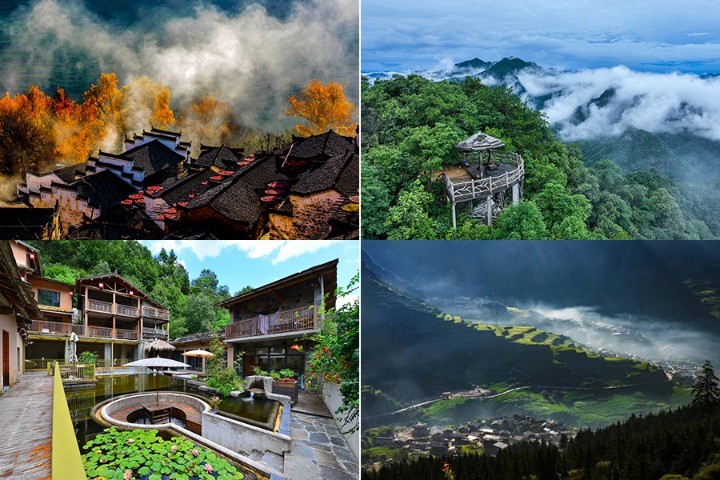Raising a glass to Ningxia
Biennale celebrates the growth of the Helan Mountains' terroir and wine culture, as industry integrates art, innovation and diversity, report Li Yingxue in Beijing and Hu Dongmei in Yinchuan.


As a cultural dialogue that transcends mountains and seas, and a deep resonance centered on art and wine, the inaugural Wine Terroir & Culture Biennale was launched in September and will run till December in Dulaan Wine Resort in Yinchuan, Ningxia Hui autonomous region.
By integrating "terroir culture" with the wine industry, the exhibition showcases wine's diversity, cultural depth, and innovation, aiming to provide a comprehensive and multilayered platform for exchange among global wine enthusiasts and professionals.
Terroir refers to the characteristic flavors imparted to a wine by the environment in which it is produced.
The choice of venue for the biennale is no coincidence. After decades of development, the eastern foothills of the Helan Mountains have become one of China's leading wine regions, with one of the largest vineyard areas, the highest number of wineries, and the most international gold medals.
According to Huang Siming, director of the management committee of the wine industry park at the eastern foothills of Helan Mountains, "Every bottle of fine wine from the Helan Mountains' eastern foothills carries the nourishment of the Yellow River, the protection of the Helan Mountains, and the warmth of the frontier's sun".
"This year's launch of the Wine Terroir &Culture Biennale is a core initiative to deeply integrate the concept of terroir into the wine industry. From winery owners and experts to cultural artists, entrepreneurs and consumers, everyone is an indispensable note in this symphony of terroir culture," Huang said.

"We encourage more social forces to participate so that the fragrance of wine culture permeates every corner of life. Together, we aim to shape a 'World Capital of Wine' and an 'International Wine Tourism Destination', making this gift of the earth a beautiful experience that connects us all and brightens our lives," he added.
Wang Ziyun, president of the Ningxia Helan Mountains East Foothill grape and wine federation, said: "Focusing on the theme of terroir culture, we aim to honor the history of the region, shape the spirit of pioneering winery owners, and celebrate the craftsmanship of master growers and winemakers.
"We express and present these stories through diverse cultural and artistic forms, bringing to life the historical scroll of the Helan Mountains East Foothill wine region, ensuring its legacy endures for generations."
In the exhibition area of the Institute of Botany, Chinese Academy of Sciences, experts praised the successful cultivation and winemaking of highly cold-resistant grape varieties of Jiuxi Winemakers in Ningxia.
Doctors Li Shaohua and Dai Zhanwu agreed that these Chinese-developed varieties adapt well to Ningxia's environment, reduce costs, improve efficiency, and display distinct quality features, marking an important step in the localization of grape varieties in China's wine industry.
According to Tan Zhiyong, owner of Jiuxi Winemakers, its goal is to produce wines that resonate with Chinese consumers, drawing on Jiuxi's environment, the expertise of viticulture specialist Liang Yuwen, and scientific support from the Chinese Academy of Sciences.

While science and innovation are pushing the region forward, traditional practices also play a defining role.
Gao Yuan, co-founder of Silver Heights winery, whose vineyards lie at the foot of the Helan Mountains, has long adhered to biodynamic practices in vineyard management.
"Grapes cultivated through biodynamic methods best express the characteristics of the terroir, making them irreplicable products," she said.
"The most challenging part is the farming experience, accumulated year after year with biodynamic practices; it cannot be bought, only understood through dedication by integrating with nature, and through repeated trials. Only then can we achieve high-quality wines and foster a sustainable, regenerative wine industry," Gao said.
A new dimension
Beyond the vineyards, another dimension of Ningxia's wine culture is also taking shape — the fusion of art and wine.
Zheng Zifeng, head of Dulaan Wine Resort, said the town was planned from the outset to use art as a bridge to turn winemaking into a broader ecosystem of culture, tourism and lifestyle.
Over the past five years, Dulaan Wine Resort has pursued this vision, using art as a medium to help the world better understand the story of Chinese wine.

Zheng believes that the inaugural Wine Terroir & Culture Biennale will mark a new starting point, sparking more artistic inspiration and fostering dialogue between artists and Ningxia wines.
This exhibition will break the boundaries between cultural artworks and commercial products, promoting integration between wine, culture, art, and society. It also seeks to remove barriers between artists and winemakers, encouraging cross-disciplinary collaboration to create wine-related works that combine artistic and cultural value with commercial potential.
Among the representatives of Ningxia's cultural entrepreneurs is Jia Wei, who sees unique strength in the Helan Mountains East Foothill region, which is shaped by dramatic day-night temperature differences, the nourishment of the Yellow River, and the shelter of the mountains — all of which contribute to the quality of its wines.
Jia hopes to combine "wine plus art", making wineries spaces not only for winemaking but also for art exhibitions and cultural exchanges. Visitors to the Helan Mountains East Foothill wine region could then enjoy fine wines while experiencing the unique fusion of art and land.
The works showcased at the biennale will feature qualities of permanence, mobility, commercial value, and digital integration, including the use of artificial intelligence. Exhibits will go beyond traditional formats by incorporating modern technology and cultural creativity, aiming to transcend the boundaries of time, space and technology.

The event is guided by an expert advisory committee comprising leading wine professionals, cultural artists and business leaders from China and abroad. The committee reflects the terroir and cultural background of the region, while ensuring the exhibition's high standards, professionalism and global vision.
"When Chinese wine consumers and enthusiasts talk about terroir — when they realize that the search for good wine can be traced through the interwoven clues of sky, earth, people, region, soil, climate, grape varieties, and vineyards — it marks a sign of maturity in China's wine consumption," said Hao Linhai, then president of the Ningxia Helan Mountains East Foothill grape and wine federation, in a speech in 2023.
Today, Hao, founding president of the federation and now director of the organizing committee of the 2025 biennale, said the Wine Terroir & Culture Biennale aims to become a globally influential cultural brand event, elevating the status of China's wine regions, including the Helan Mountains East Foothill area.
He added that through competitions, auctions and related events, the biennale also aims to raise the market value and consumer awareness of wine, while promoting the integration of "wine plus tourism plus culture" to create a new identity for the region.
Contact the writers at liyingxue@chinadaily.com.cn

















